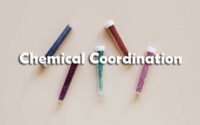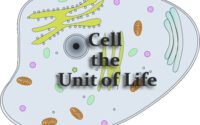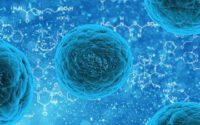Reproductive Health
1. In case of a couple where the male is having a very low sperm count, which technique will be suitable for fertilisation?
A. Intrauterine transfer
B. Gamete intracytoplasmic fallopian transfer
C. Artificial Insemination
D. Intracytoplasmic sperm injection
2. The function of copper ions in copper releasing IUD’s is—
A. they suppress sperm motility and fertilising capacity of sperms
B. they inhibit gametogenesis
C. they make uterus unsuitable for implantation
D. they inhibit ovulation
3. Which of the following is hormone-releasing IUD?
A. LNG-20
B. Multiload 375
C. Lippes loop
D. Cu7
4. Which of the following is incorrect regarding vasectomy?
A. no sperm occurs in seminal fluid
B. no sperm occurs in epididymis
C. vasa deferentia is cut and tied
D. irreversible sterility
5. Embryo with more than 16 blastomeres formed due to in vitro fertilisation is transferred into-
A. Uterus
B. fallopian tube
C. fimbriae
D. cervix
6. In context of amniocentesis, which of the following statements is incorrect?
A. It can be used for syndrome detection of Down‘s
B. it can be used for detection of cleft palate.
C. it is usually done when a woman is between 14-16 weeks pregnant
D. It is used for prenatal sex determination.
7. Assertion : Fetal disorders can be diagnosed by chorionic villi sampling
Reason : Karyotyping can be done for mitotically dividing cells of chorionic villi.
A. If both assertion and reason are true and reason is the correct explanation of assertion.
B. If both assertion and reason are true but reason is not the correct explanation of assertion.
C. If assertion is true but reason is false.
D. If both assertion and reason are false.
8. A childless couple can be assisted to have a child through a technique called GIFT. The full form of this technique is—
A. Gamete inseminated Fallopian Transfer
B. Gamete Intrafallopian Transfer
C. Gamete Internal Fertilisation and Transfer
D. Germ Cell Internal Fallopian Transfer
9. Progestasert is an IUD which make the uterus unsuitable and cervix hostile to the sperms as it is—
A. Non medicated IUD
B. Ideal contraceptive
C. Copper releasing IUD
D. Hormone releasing IUD
10. Assisted reproductive technology does not include—
A. gamete intrafallopian transfer
B. artificial insemination
C. in vitro fertilization and embryo transfer
D. zygote extra-fallopian transfer
11. In birth control methods, which one is an intra-uterine device—
A. LNG-20
B. Saheli
C. Vaginal ring
D. DMPA
12. A contraceptive pill prevents ovulation by-
A. blocking fallopian tube
B. inhibiting release of FSH and LH
C. stimulating release of FSH and LH
D. causing immediate degeneration of released ovum.
13. The most important component of oral contraceptive pill is—
A. Progesterone
B. growth hormone
C. thyroxine
D. luteinising hormone
14. Assisted reproductive technology, IVF, involves transfer of—
A. zygote into fallopian tube
B. zygote into uterus
C. embryo with 16 blastomeres into the fallopian tube
D. ovum into fallopian tube.
15. Tubectomy is a method of sterilization in which—
A. ovaries are removed surgically
B. small part of vas deferens is removed or tied up
C. uterus is removed surgically
D. small part of fallopian tube is removed or tied up
16. Which of the following statements is wrong?
(i) Test tube baby grows inside test tube.
(ii) Test tube baby grows within mother’s womb.
(iii) Test tube baby grows within surrogate mother’s womb.
(iv) Test tube baby grows following uterine fertilisation.
A. (i) and (ii)
B. (ii) and (iii)
C. (i) and (iv)
D. (iii) and (iv)
17. Which is the hormonal method of birth control?
A. Pill
B. IUD
C. Vasectomy
D. Femidom
18. Which of the following sexually transmitted disease is caused by yeast?
A. Candidiasis
B. Scabies
C. Enterobiasis
D. Syphilis
19. One of the following causes population explosion.
A. decrease in death rate, maternal mortality rate and infant mortality rate
B. decrease in death rate and increase in maternal mortality rate
C. decrease in infant mortality rate and increase in death rate
D. decrease in infant mortality rate and decrease in the number of people in reproductive age.
20. IUDs which are used by females—
A. are implanted under the skin and they release progesterone and estrogen
B. act as spermicidal jellies
C. release copper ions in the uterus that increase phagocytosis of sperm
D. block the entry of sperms into vagina.
21. In which “assisted reproductive technology” (ART), test tube baby procedure is applied—
A. gamete intrafallopian transfer
B. intracytoplasmic sperm injection
C. in vitro fertiliztion and embryo transfer
D. zygote intrafallopian transfer
22. Technique used to block the passage of sperms in male-
A. tubectomy
B. vasectomy
C. coitus interruptus
D. rhythm method
23. A sexually transmitted disease symptomised by the development of chance on the genitals is caused by the infection of—
A. Treponema pallidum
B. Neisseria gonorrhoeae
C. human immunodeficiency virus
D. hepatitis B virus
24. In which technique, the donor semen is artificially introduced into the uterus?
A. Intra-vaginal insemination
B. Intra-uterine insemination
C. Intra cytoplasmic sperm injection
D. Gamete Intra Fallopian transfer
25. In vitro fertilisation involves introduction of _______ into the uterine endometrium.
A. embryo with more than 8 blastomeres
B. embryo with 8 blastomeres
C. embryo with less than 8 blastomeres
D. zygote with 8 blastomeres
26. Which of the following cannot be detected in a developing foetus by amniocentesis-
A. Jaundice
B. Klinefelter’s syndrome
C. sex of foetus
D. Down’s syndrome
27. One of the legal methods of birth control is—
A. by a premature ejaculation during coitus
B. abortion by taking an appropriate medicine
C. by abstaining from coitus from 10—17days of menstrual cycle
D. by having coitus at the time of day break.
28. Artificial insemintion means-
A. artificial introduction of sperms of a healthy donor into the vagina
B. introduction of sperms of a healthy donor directly into the ovary
C. transfer of sperms of a healthy donor to a test tube containing ova
D. transfer of sperms of husband to a test tube containing ova.
29. Which of the following contraceptive devices makes uterus unsuitable for implantation?
A. Progestasert
B. CuT
C. Lippe‘s loop
D. Multiload
30. Assertion : Periodic abstinence is a natural method where couples abstain from coitus
Reason : Coitus from days 5-10 should be avoided because this is the time of ovulation.
A. both are true with reason being correct explanation.
B. both are true but reason is not correct explanation
C. assertion is true but reason is wrong
D. both are wrong.
31. Oral contraceptive prevents pregnancy by—
A. killing the ovum
B. blocking fertilisation
C. preventing ovulation
D. preventing implantation
32. Induced abortion is—
A. IUD
B. PID
C. MTP
D. STD
33. The stage transferred into the uterus after induced fertilisation of ova in the laboratory is-
A. embryo at 4 blastomeres stage
B. embryo at 2 blastomeres stage
C. morula
D. zygote
34. Which one of the following statements is correct regarding sexually transmitted diseases (STDs)?
A. A person may contact syphilis by sharing milk with one already suffering from the disease.
B. Haemophilia is one of the STDs.
C. Genital herpes and sickle-cell anaemia are both STDs.
D. The chances of a 5 years boy contacting a STD are very little.
35. Which one of the following is not a method of contraception?
A. Condom
B. Pills having oxytocin and vasopressin
C. Lippes loop
D. Tubectomy
36. Read the statements A and B and identify the correct choice from those given.
Statement A : Women are at the peak of conception on the 14th day of menstrual cycle.
Statement B : Vasectomy is the method normally employed to avoid conception in females.
A. statement A is wrong, B is right
B. statement A is right, B is wrong.
C. both the statements are right.
D. both the statements are wrong.
37. The appearance of chancre, rashes all over the body are symptoms of—
A. Gonorrhoea
B. AIDS
C. Syphilis
D. Fever
38. Which is not a sexually transmitted disease-
A. Genital warts
B. Trichomoniasis
C. Chlamydiasis
D. Myasthenia gravis
39. CuT, LNG-20 and Cu7 are example of—-
A. contraceptive pills
B. surgical methods of sterilisation
C. assisted reproductive technology
D. intrauterine device
40. Main factor for population growth in India is-
A. high birth rate
B. low death rate of infants
C. lack of education
D. all of these
41. The word tubectomy refers to—
A. sterilization of male reproductive organ
B. sterilization of female reproductive organ
C. insertion of Cu-T
D. use of condoms
42. The test-tube baby programme employs which one of the following techniques?
A. Intra Cytoplasmic Sperm Injection (ICSI)
B. Intra Uterine Insemination (IUI)
C. Gamete Intra Fallopian Transfer (GIFT)
D. Zygote Intra Fallopian Transfer (ZIFT)
43. Urinogenital tract infection in males accompanied by yellow discharge, burning feeling on passing urine, fever and headache is—
A. AIDS
B. Gonorrhoea
C. Hepatitis B
D. Syphilis
44. Which ones are all sexually transmitted diseases—
A. Hepatitis—B, AIDS, Haemophilia
B. AIDS, Syphilis, Cholera
C. Trichomoniasis, Malaria, HIV
D. Gonorrhoea, Hepatitis—B, Chlamydia
45. Which is wrongly matched—
A. ICSI—Sperm directly injected into ovum
B. IUT—Semen introduced artificially into uterus
C. GIFT—-Embryo with more than 8 blastomeres transferred into fallopian tube.
D. IVF——Fertilization outside the body
46. Sexually transmitted disease affecting both males and female genitals which often damages eyes of babies born to infected mothers—
A. Syphilis
B. Gonorrhoea
C. Hepatitis
D. AIDS
47. Permanent contraception in human male is through-
A. diaphragm
B. tubectomy
C. vasectomy
D. pill
48. In which ART technique the semen is artificially introduced into the female-
A. ET
B. IUI
C. IUT
D. GIFT
49. Vasectomy prevents
A. production of sperms in testes
B. production of semen
C. movement of sperms into urethra
D. male rection.
50. Which is not a cause of male infertility-
A. motile sperms
B. oligospermia
C. teratozoospermia
D. asthenozoospermia
51. Assertion : Amniocentesis is banned
Reason : Amniocentesis gives information about foetal abnormalities
A. both are true with reason being correct explanation
B. both are true but reason is not correct explanation
C. assertion is true but reason is wrong
D. and both are wrong.
52. Which one of the following is the most widely accepted method of contraception in India at present?
A. Cervical caps
B. Tubectomy
C. Diaphragms
D. IUDs (Intra Uterine Devices)
53. MTP is considered safe upto how many weeks of pregnancy?
A. Six
B. Eight
C. Twelve
D. Eighteen
54. The technique called Gamete Intra Fallopian Transfer (GIFT) is recommended for those females—
A. who cannot produce an ovum
B. who cannot retain the fetus inside uterus
C. whose cervical canal is too narrow to allow passage for the sperms
D. who cannot provide suitable environment for fertilisation
55. If vasa efferentia get blocked, gametes will not be transported from—-
A. ovary to uterus
B. vagina to uterus
C. testis to epididymis
D. epididymis to vas deferens



